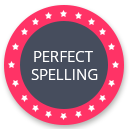According to researchgate.net, out of the 540 students that have joined in answering on the five questions, 510, which are 94%, wrote their answers without a full stop at the end of each of the sentences. They really need help from a punctuation checker.
Share this:
Facts You Don’t Know:
- Languages did not always have punctuation
- Most Asian and African languages did not have punctuation, or functioned with the bare minimum
- Sanskrit has a different or unique way of grouping and packaging words in order to compensate for its lack of punctuation
Funny Examples of Punctuation Usage
- Eat your dinner!
Eat. You’re dinner! - A woman without her man is nothing.
A woman: without her, man is nothing.
Do you know what is the average typing speed? Is it different for both man and woman? What are gender differences in typing? If no find the answers today!
A Few Tips for Using Punctuation
- Comma: Use it when separating item in your list. You should also use it before “and, or, but, for, nor, yet, so…” when they are connecting independent clauses, except when the clause is short. In addition, use commas when setting off non-essential phrases and clauses.
- Colon: You should use it if you mean note what follows. Also, use it before a quotation or a formal statement.
- Apostrophe: Use it when forming the possessive form of a singular noun. Example, “Mary’s store, Elmo’s car, Ben’s house” But then if adding an‘s’ will produce an awkward sound, you should only add an apostrophe, especially in the case when there’s already double s sound. Example: Moses’
- Quotation marks: Remember to put commas and periods inside of quotes. But then, you should put semicolons and colons outside of quotes. Change the placement of question marks and exclamation marks, based on the meaning.
There you have the most important facts and statistics you need to know about punctuation, as well as some tips on how to improve your skills on it. Or you can just find online grammar and punctuation check.







